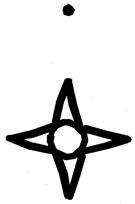Anthropology, Department of

Nebraska Anthropologist
Date of this Version
2012
Document Type
Article
Citation
Nebraska Anthropologist 2012
Abstract
Reduction measures, especially those measures which compute a scaled index, have been profitably employed in archaeological research on many Old World assemblages. Utilization of these techniques is still a burgeoning subject in North American archaeology, however, and North American assemblages present unique challenges to the analyst. Chief among these difficulties are the greater prevalence of hafted bifaces and other formal tools, especially when contrasted to the Mousterian toolkits that have been the traditional targets for reduction analyses. Other researchers have developed new methods for analyzing projectile points or end scrapers, though these methods are not without weaknesses and I am critical of reduction analyses that rely on only a narrow spectrum of the lithic assemblage. This paper seeks to adapt reduction indices to North American assemblages through exploring the strengths and weaknesses of a variety of measures, with the goal of integrating several measures on multiple types of artifacts into a more comprehensive analysis. A particular site in northeastern Kansas has been chosen as a reference for this discussion, but it is hoped that this example will help illuminate issues that researchers in other areas will find useful.


Comments
Copyright 2012